Cruising the Danube River
One of today’s hottest travel trends is river cruising. Dive in to discover the many pleasures of Europe’s popular Danube River.
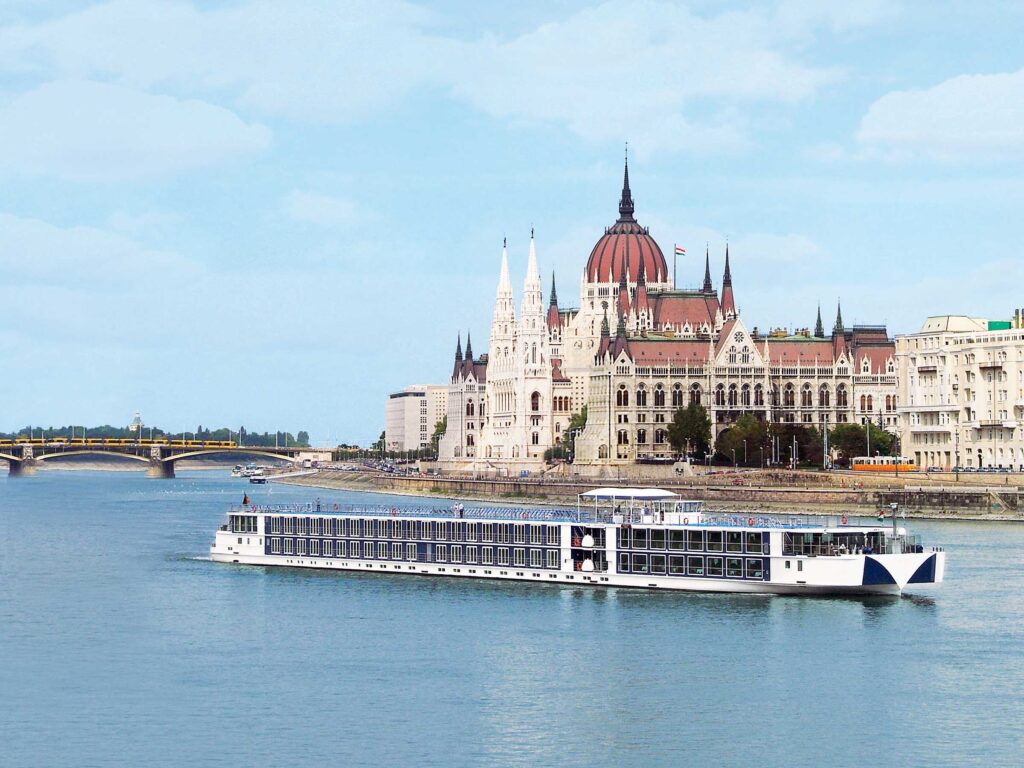 Uniworld
Uniworld
Its gentle currents and picturesque shores have inspired poets and composers, and Napoleon called it “the queen of Europe’s rivers.” The Danube originates in southwestern Germany, in the mountains of the Black Forest, and passes through 10 countries before emptying into the Black Sea. Dotted with medieval castles and fortresses, the Danube once divided great empires. Today, this enchanting waterway invites river cruisers to enjoy the capital cities, quaint villages and cultural pleasures along its banks.
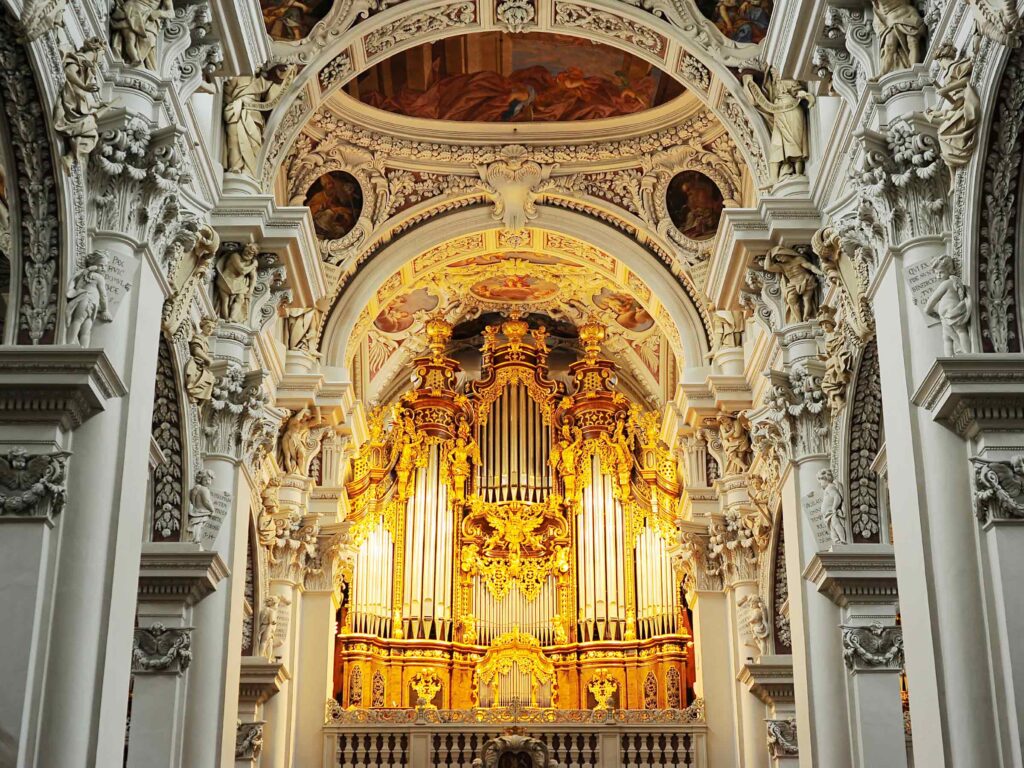 iStock
iStock
Passau
At the confluence of three rivers—the Danube, Inn and Ilz—sits the ancient German city of Passau. Sprawling squares, winding lanes and grand architecture invite cruisers to go ashore for a stroll through Old Town, which burnt down and was rebuilt in the 17th century by Italian baroque designers. Look for the onion-domed towers of St. Steven’s Cathedral rising above the red-tiled roofs. Built between 1688 and 1693, the church is home to the world’s largest Catholic church organ (above); a concert played on its more than 17,000 pipes is an acoustic delight.
Essential Experience: Ride a horse-drawn wagon through the Bavarian Forest. After a visit to a German village to meet the locals—and sample fresh-baked bread from a rustic wood-fired oven—this river-cruise excursion ends with a tour by horse-drawn carriage of the village and forest.
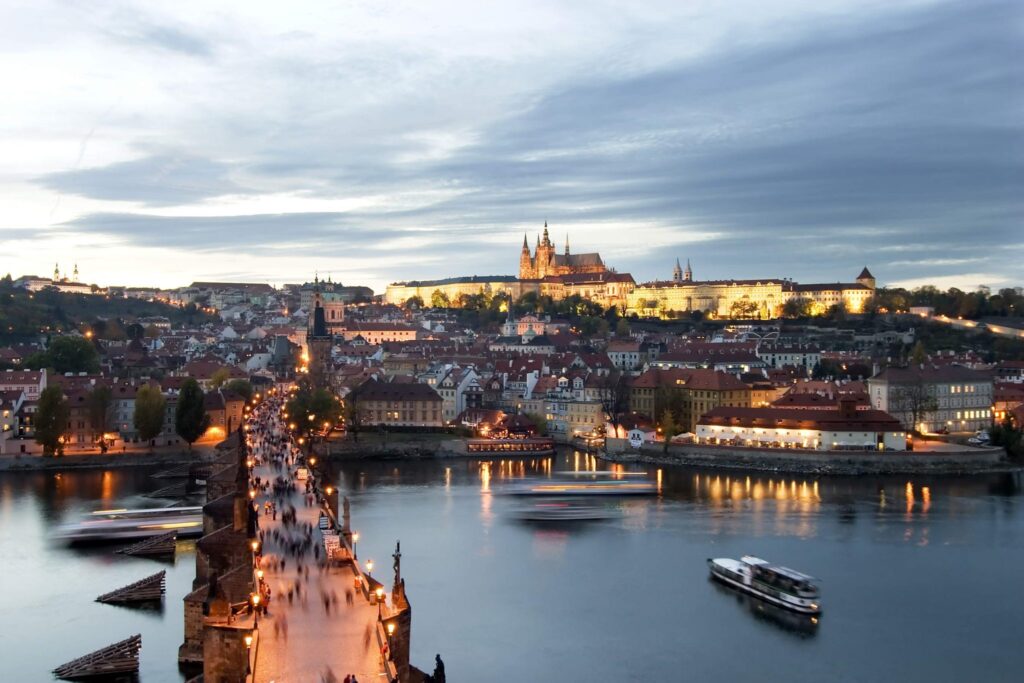 Shutterstock
Shutterstock
Prague
A city whose beauty is said to rival that of Paris, Prague is some 140 miles north of the Danube from Passau—but it’s still a favorite destination for river cruisers, who get there via motor coach. Called the “city of a hundred spires,” the Czech Republic capital is full of architectural wonders. In the Old Town Square, visitors gather—necks craned and cameras ready—to watch the 600-year-old astronomical clock as it comes to life at the top of the hour. A stroll across the Charles Bridge, with its Gothic towers and baroque statues, reveals a stunning view of Prague Castle (above)—the world’s largest castle complex. Its graceful spires and stained-glass windows are best glimpsed along with the day’s first rays of sunlight.
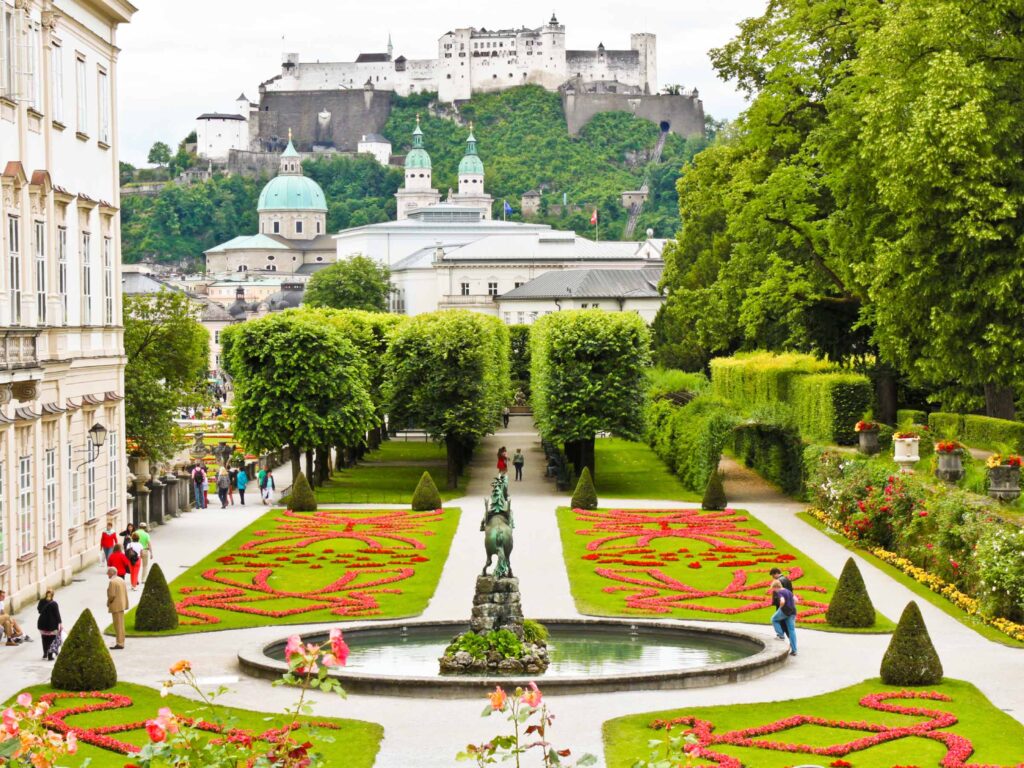 iStock
iStock
Salzburg
With the Eastern Alps rising along its southern horizon, this Austrian city exudes a storybook beauty—from the ornate churches and palaces of Old Town to the 940-year-old Hohensalzburg Fortress perched high above the city center. But Salzburg is just as proud of its musical legacy. Step onshore to visit the building—now a museum—where Wolfgang Amadeus Mozart was born, then wander the gardens of Mirabell Palace (above), where Maria and the children sing “Do-Re-Mi” in The Sound of Music.
Essential experience: Enjoy an Austrian specialty. A walking tour of Linz takes travelers to the heart of this lively arts hub, where cafes serve up a delicate pastry named for the city. Thought to be the oldest recorded pastry recipe in the world (dating to 1653), the Linzer torte is known for its trademark lattice. Guten appetit!
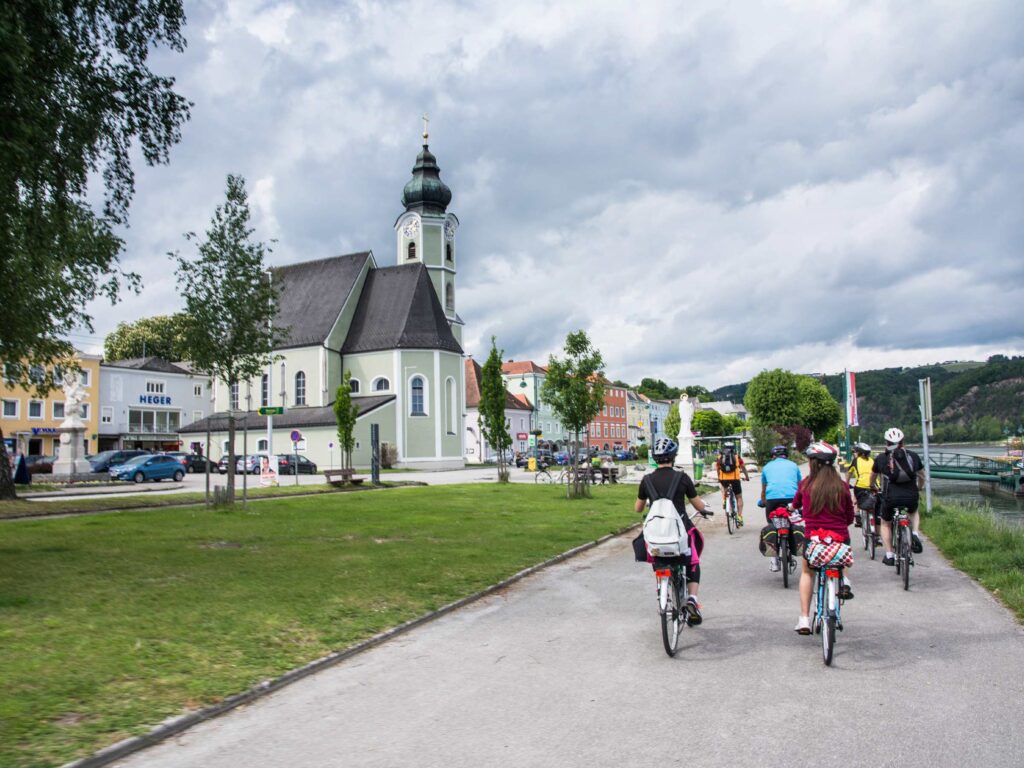 iStock
iStock
Durnstein
This tiny Austrian village is big on Old-World charm. River-cruise ships tie up in the heart of town, so the cobbled lanes—lined with baroque and Gothic architectural gems—are only steps away. Wander Hauptstrasse, with its shops and picturesque 16th-century residences, or make the 30-minute climb to Durnstein Castle—where England’s King Richard I was once imprisoned. Durnstein is known for its wineries, so sample some local vintages, including the prized Rieslings and Gruner Veltliners. Pair them with another area specialty, apricots—especially tasty in the form of dumplings or strudel.
Essential experience: Ride a bike through Austria’s Wachau Valley. Most river-cruise ships carry bicycles and offer a guided ride along this ultra-scenic stretch of the river (above). Pedal along the paved trail past castles, abbeys and vineyards—at times, you’ll catch up to or even pass your ship!
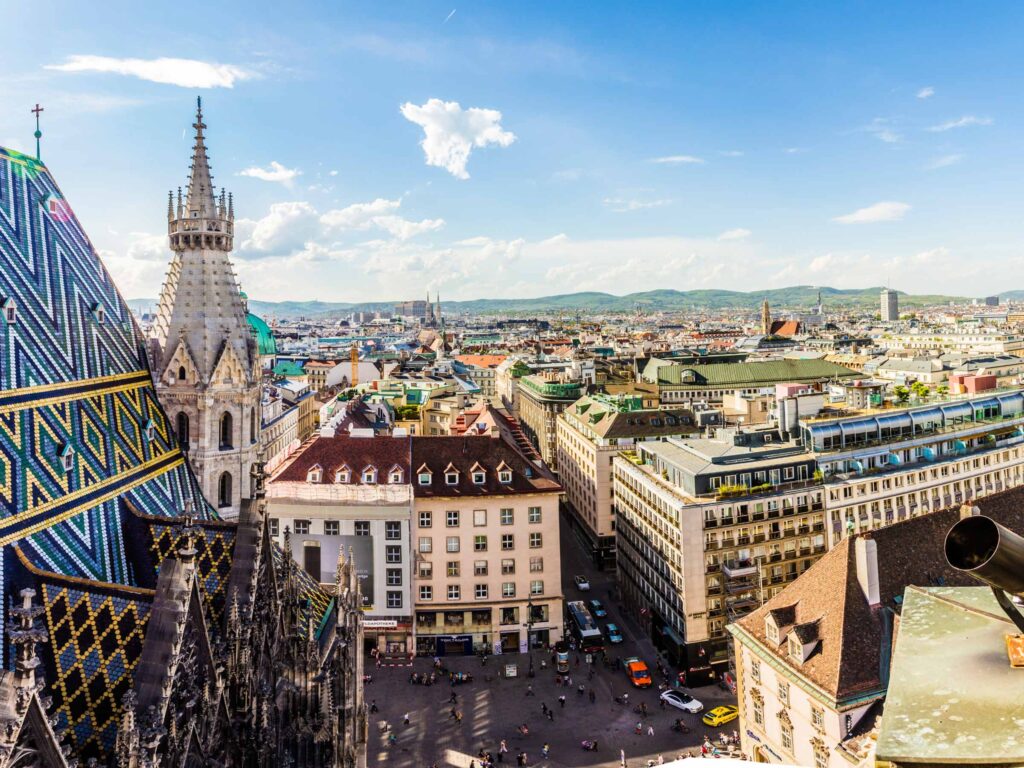 iStock
iStock
Vienna
Steeped in imperial grandeur, the capital of Austria spans both sides of the Danube, with most of its iconic sights on the right bank, where cruise ships dock. Most passengers linger in Vienna’s Innere Stadt—where the grandest of the grand buildings are huddled. A tour of the opulent Hofburg Palace, the seat of power for the Habsburg dynasty, offers a glimpse into royal life—don’t miss ogling the priceless jewels in the Imperial Treasury. Nearby, the symbol of Vienna, St. Stephen’s Cathedral, offers sweeping views from its tower room, reachable by 343 steps (above). Back on the ground, Vienna’s legendary coffeehouse culture thrives; an afternoon spent at the storied Cafe Central savoring a cup and a pastry—accompanied by live piano music—is a classic way to sample it. The city center’s verdant parks are also worthy places to relax; grab a to-go lunch from Julius Meinl, a three-story specialty food store and deli, and enjoy it by the Mozart statue in the Burggarten (Castle Garden).
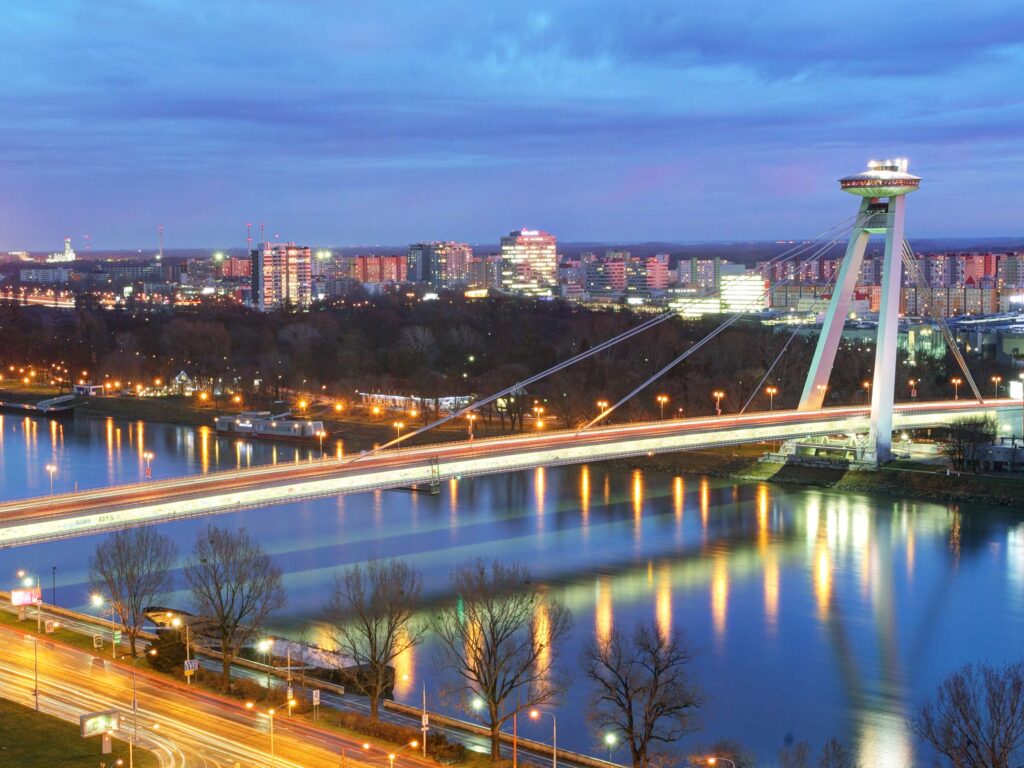 iStock
iStock
Bratislava
Just 40 miles east of Vienna, the Slovakian capital—with its compact Old Town—is a delight for exploring on foot. Traffic-free streets meander past medieval buildings, baroque palaces and Gothic cathedrals, as well as inviting shops and cafes. High on a hill overlooking the town, the centuries-old Bratislava Castle affords panoramic views of the Danube, Old Town’s red-tiled rooftops and the Communist-era New Bridge, with a flying saucer-shaped restaurant—appropriately named UFO—perched atop it (above).
Essential experience: Stake out a spot on the sun deck while navigating the Danube Bend. You’ll want to be outside to savor the view along this picturesque corridor, where the Danube abruptly changes course from flowing east to heading south.
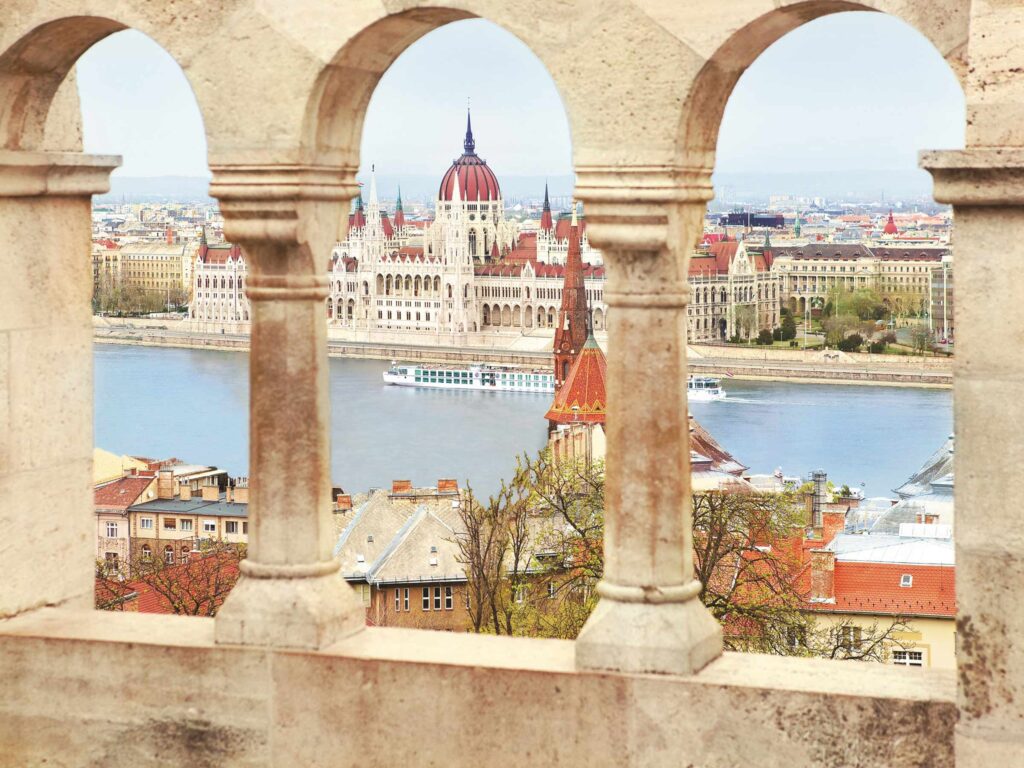 Uniworld
Uniworld
Budapest
Straddling the Danube River, Hungary’s capital unites two formerly separate cities, Buda and Pest. Step off the ship onto the east bank of the Danube to find bustling Pest, dominated by the ornate Parliament Building (above)—don’t miss the postcard-perfect photo op with the neo-Gothic structure reflected in the river’s surface. After taking in the views from the cupola of 315-foot-tall St. Stephen’s Basilica, people-watching from an outdoor cafe in St. Stephen’s Square is a pleasure. An easy walk across Budapest’s famous Chain Bridge, hilly Buda beckons with winding, cobbled streets and Gothic homes that date to the Middle Ages. On Castle Hill, tour the Buda Royal Castle—now home to a museum, art gallery and library. But to really soak in the essence of Budapest, a dip in one of its luxurious public baths—fed by natural thermal springs—is a must. Buy a day pass for beautiful Gellert Baths, an easy walk from where river-cruise ships are docked.